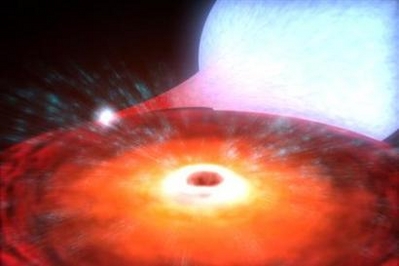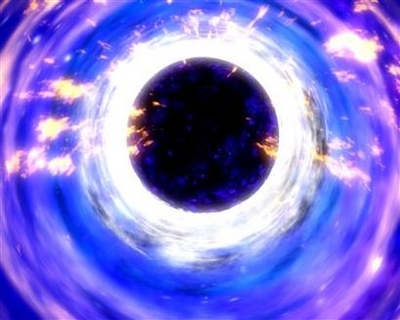News, April 2008
|
Editorial Note: The following news reports are summaries from original sources. They may also include corrections of Arabic names and political terminology. Comments are in parentheses. |
|
NASA scientists find smallest, lightest black hole
|
|
www.chinaview.cn
|
|
|
BEIJING, April 2 (Xinhuanet) -- NASA scientists have identified the smallest, lightest black hole yet found. The new lightweight record-holder weighs in at about 3.8 times the mass of our sun and is only 15 miles (24 kilometers) in diameter. "This black hole is really pushing the limits," said study team leader Nikolai Shaposhnikov of NASA's Goddard Space Flight Center in Greenbelt, Maryland. "For many years astronomers have wanted to know the smallest possible size of a black hole, and this little guy is a big step toward answering that question." The low-mass black hole sits in a binary system in our galaxy known as XTE J1650-500 in the southern hemisphere constellation Ara. NASA's Rossi X-ray Timing Explorer (RXTE) satellite discovered the system in 2001, and astronomers soon realized that the system harbored a relatively lightweight black hole. But the black hole's mass had never been precisely measured. Black holes can't be seen, but they're identified by the activity around them, which also helps astronomers estimate a size of the region inside the activity, and how much mass must be in that confined region to generate all the surrounding activity. More specifically, astronomers can weigh black holes by using a relationship between the apparent size of the black hole and the X-rays emitted by the torrent of gas that swirls into the black hole's disk from its companion star.
Shaposhnikov and his colleague Lev Titarchuk of George Mason University used this method to "weigh" XTE J1650-500 and found a mass of 3.8 suns. This value is well below the previous record holder GRO 1655-40, which tips the scales at about 6.3 suns. This new mass measurement could help shed light on what the smallest star that will produce a black hole is. Astronomers know that some unknown critical threshold, possibly between 1.7 and 2.7 solar masses, marks the boundary between a star that generates a black hole upon its death and one that produces a neutron star. (Agencies) |
| Editor: Gareth Dodd |
Fair Use Notice
This site contains copyrighted material the use of which has not always been specifically authorized by the copyright owner. We are making such material available in our efforts to advance understanding of environmental, political, human rights, economic, democracy, scientific, and social justice issues, etc. We believe this constitutes a 'fair use' of any such copyrighted material as provided for in section 107 of the US Copyright Law. In accordance with Title 17 U.S.C. Section 107, the material on this site is distributed without profit to those who have expressed a prior interest in receiving the included information for research and educational purposes. For more information go to: http://www.law.cornell.edu/uscode/17/107.shtml. If you wish to use copyrighted material from this site for purposes of your own that go beyond 'fair use', you must obtain permission from the copyright owner.
|
|
|
|
||
|
||||||




